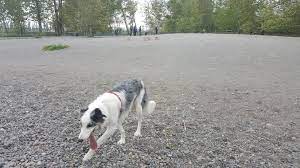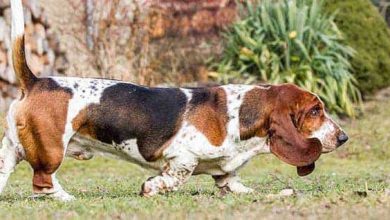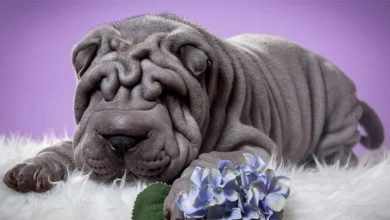Warren G Magnuson Park Off Leash Area


Warren G. Magnuson Park, located in Seattle, Washington, is a hidden gem for dog owners and enthusiasts. This sprawling park, named after former U.S. Senator Warren G. Magnuson, offers an expansive off-leash area where dogs can roam freely, play, and socialize. Designed with the well-being and happiness of dogs in mind, the Warren G. Magnuson Park Off-Leash Area has become a popular destination for dog owners seeking a safe and welcoming environment for their furry companions.
Seattle is known for its picturesque landscapes, stunning parks, and a dog-friendly culture that welcomes four-legged friends with open arms. Among the many parks in the city, Warren G. Magnuson Park stands out as a prominent destination for dog owners due to its dedicated off-leash area. This article explores the history of Warren G. Magnuson Park, highlights the importance of off-leash areas for dogs, and provides an in-depth look at the features and benefits of the park’s off-leash area.
History of Warren G. Magnuson Park
Originally established as Sand Point Naval Air Station in 1922, Warren G. Magnuson Park has a rich history deeply rooted in the military. Over the years, the park underwent significant transformations and was eventually turned over to the City of Seattle in 1975. Since then, it has been developed into a recreational haven for both humans and their furry companions. The park’s commitment to providing dog-friendly spaces led to the creation of the Warren G. Magnuson Park Off-Leash Area.
The Importance of Off-Leash Areas for Dogs
Off-leash areas play a vital role in the overall well-being of dogs. Dogs are social animals that require regular exercise, mental stimulation, and socialization with both humans and other dogs. Off-leash areas provide an opportunity for dogs to engage in these essential activities while offering a safe and controlled environment. Such areas allow dogs to run, play, explore, and interact, promoting their physical health, mental well-being, and overall happiness.
Warren G. Magnuson Park Off-Leash Area: A Haven for Dogs
Location and Facilities
The Warren G. Magnuson Park Off-Leash Area spans over nine acres of beautiful, open space. It is conveniently located within the park, making it easily accessible to dog owners from all over the city. The area is fenced and secure, providing peace of mind to dog owners while allowing their furry companions to roam freely.
Dog-Friendly Features at Warren G. Magnuson Park
The off-leash area at Warren G. Magnuson Park is thoughtfully designed with various features to cater to the needs of dogs. It boasts open fields for dogs to run and play fetch, wooded trails for exploration, and even access to Lake Washington for those water-loving canines. The area is also equipped with water stations and waste disposal facilities, ensuring the comfort and convenience of both dogs and their owners.
Safety Measures
Safety is a top priority at the Warren G. Magnuson Park Off-Leash Area. The fencing surrounding the area prevents dogs from wandering off and ensures a secure environment. Additionally, there are designated areas for small and large dogs, allowing for safe and appropriate play among dogs of similar sizes. The park also enforces rules such as requiring dogs to be licensed, vaccinated, and under control at all times to maintain a harmonious and safe space for all visitors.
Benefits of Visiting the Off-Leash Area at Warren G. Magnuson Park
Physical and Mental Stimulation for Dogs
Regular exercise is essential for a dog’s physical health. The Warren G. Magnuson Park Off-Leash Area provides ample space for dogs to engage in activities that promote agility, strength, and overall fitness. Furthermore, the off-leash area offers mental stimulation through exploration, sniffing, and encountering new environments, which is vital for a dog’s cognitive well-being.
Socialization Opportunities
Dogs are inherently social animals and thrive when given opportunities to interact with other dogs and humans. The off-leash area at Warren G. Magnuson Park encourages positive socialization, allowing dogs to build confidence, learn proper behavior, and establish meaningful connections with their fellow canines.
Bonding Between Dog and Owner
The off-leash area is not just a place for dogs; it also creates a space for bonding between dogs and their owners. By spending quality time together in a relaxed and enjoyable environment, the bond between a dog and its owner strengthens. Activities like playing fetch, training exercises, or simply walking side by side can deepen the connection and trust between them.
Tips for a Positive Experience at Warren G. Magnuson Park Off-Leash Area
To ensure a positive experience for all visitors, it is essential to follow park rules and practice responsible pet ownership. Here are some tips to make the most of your visit to the Warren G. Magnuson Park Off-Leash Area:
Following at Warren G. Magnuson Park Rules and Etiquette
Respect the park rules and guidelines posted at the entrance of the off-leash area. These rules are in place to ensure the safety and enjoyment of all visitors. Some common rules include cleaning up after your dog, preventing aggressive behavior, and keeping your dog under control at all times.
See also: How to Make a DIY Hands-Free Dog Leash: A Step-by-Step Guide
Proper Dog Training and Control
Before visiting the off-leash area, ensure your dog has received basic training and responds well to commands. Training your dog to come when called and to exhibit good manners with other dogs will contribute to a positive and safe environment for everyone.
Responsible Pet Ownership
Remember that responsible pet ownership goes beyond the off-leash area. Keep your dog’s vaccinations up to date, provide regular veterinary care, and ensure they are licensed. Additionally, always carry waste bags to clean up after your dog and dispose of waste in the designated bins.
Community Involvement and Support
The success of the Warren G. Magnuson Park Off-Leash Area is greatly attributed to the support and involvement of the community. Local organizations, volunteers, and dog enthusiasts work together to maintain and improve the facilities, organize events, and promote responsible dog ownership. Their dedication ensures that the off-leash area remains a cherished place for dogs and their owners to enjoy.
Conclusion
The Warren G. Magnuson Park Off-Leash Area is a testament to Seattle’s commitment to providing a welcoming and safe space for dogs. This dedicated area within the park allows dogs to socialize, exercise, and explore in a controlled environment. By offering a range of dog-friendly features and implementing safety measures, the off-leash area ensures that both dogs and their owners can enjoy their time together to the fullest.
FAQs about Warren G. Magnuson Park Off-Leash Area
Here are the most FAQs about the Warren G. Magnuson Park Off-Leash Area:
Is Warren G. Magnuson Park Off-Leash Area free to use?
Yes, the Warren G. Magnuson Park Off-Leash Area is free for dog owners to use.
Are there separate areas for small and large dogs?
Yes, the off-leash area at Warren G. Magnuson Park has designated sections for small and large dogs to ensure safe and appropriate play.
Can I bring my children along to the off-leash area?
Children are welcome in the off-leash area but must be supervised by an adult at all times to ensure their safety and the safety of the dogs.
See also: Is border collie a good off-leash dog
Are there any restrictions on the types of dogs allowed?
All breeds and types of dogs are welcome at Warren G. Magnuson Park Off-Leash Area, as long as they are well-behaved, licensed, and vaccinated.
Is the off-leash area open year-round?
Yes, the Warren G. Magnuson Park Off-Leash Area is open year-round, allowing dog owners to visit and enjoy the facilities throughout the seasons.



